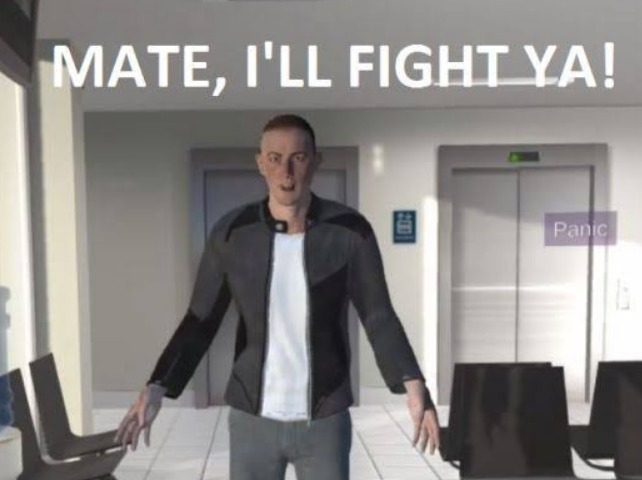Virtual anger as nursing aid
 Nursing students may soon face a barrage of insults and belligerence from a virtual reality (VR) simulation of an angry patient.
Nursing students may soon face a barrage of insults and belligerence from a virtual reality (VR) simulation of an angry patient.
The new VR training program replicates a real-world emergency room and asks students to respond to a high-pressure mock scenario.
As part of the Bachelor of Nursing at the University of Newcastle, students undertaking their mental health module are immersed via VR headset.
Faced with ‘Angry Stan’, an avatar based on real-world interactions, users must remain calm and navigate a range of challenges to manage the situation.
Angry Stan is the first program of its kind to respond to real-time biofeedback – for example the human heart rate.
It gives second-year students a realistic insight into the clinical workplace where they can practise controlling their stress levels, managing conflict and building resilience in the classroom before entering the clinical environment.
Their task is to assess the situation and respond to Stan’s questions in a way which puts him at ease, alongside balancing competing priorities, whilst also maintaining a steady heartrate.
The calmer students remain, the easier Stan and the scenario is to deal with.
Even if unprovocative responses are selected by the user, the wording is altered to be more provocative if the technology picks up from their heart rate that they are stressed
“Working in an emergency environment can be incredibly demanding, with emotions running high and competing priorities,” said project lead and lecturer in the School of Nursing and Midwifery, Dr Donovan Jones.
“Knowing how to effectively diffuse an escalating situation while keeping a clear head can make a life-changing difference in emergency care, which is why we want to ensure our graduates are well-equipped with resilience training when entering the workforce.”
Professor of Mental Health Nursing, Mike Hazelton, called on his decades in the field to help develop Angry Stan based on very real, lived experience.
“Mental health nursing is an incredibly rewarding career, however it’s an environment where emotions can run high as you encounter people who are having possibly the worst day of their lives,” Professor Hazelton said.
“Stan represents someone health workers may come face-to-face with in an emergency environment. He is looking for his friend who has been brought in as a patient and is becoming increasingly agitated.”
A demonstration can be seen below.







 Print
Print